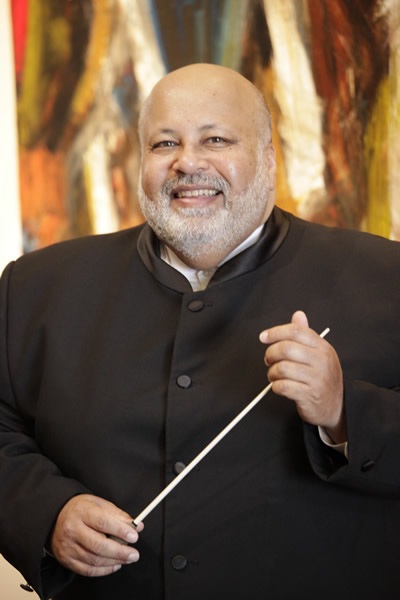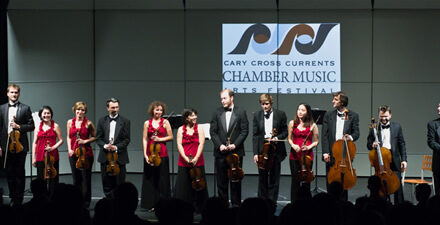It was a rare Tuesday evening appearance for the North Carolina Symphony at Memorial Hall on the University of North Carolina campus, and it allowed some people, like me, who have standing engagements on Thursdays, to attend a wonderful program played at a high level. William Henry Curry, Resident Conductor, was on the podium and his clear beat, attention to detail and creation of unanimity of sound were all critical factors in the success of this concert.
If the name “Haffner” jumps out at you as having been seen in relation to another work, you’d be absolutely right. In 1782 Mozart was asked (some would say ordered) to compose a work for Siegmund Haffner, the mayor of Salzburg who was being elevated to nobility. Mozart first produced a six-movement serenade which goes by Haffner’s name. The fleet composer dashed this work off rather quickly and when looking at it again was rather surprised at its quality. He made some alterations, dropped two movements and added more woodwinds and metamorphosed it into his thirty-fifth symphony.
The “Haffner” Symphony is one of the most pure and perfect examples of the Classical Style. Its four movements play out like a textbook example of the classical symphony and every moment is a joy to listen to — even after numerous repeated hearings. No one movement overstays its welcome as some slow movements can do. The entire orchestra played with grace, never heavy handed even in the loud sections, and with clean execution. The Presto movement has some treacherous finger-twisting sections for the strings that are often used as orchestra audition excerpts. They all made it sound so easy; that’s why they’re up there playing!
Wagner. The name conjures up so many strongly held opinions, musically and culturally. Well, it’s the 200th anniversary of his birth so you’re going to see and hear plenty of him during 2013. For those who count themselves as supporters of the famous invectives that “Wagner’s music is better than it sounds” or “I like it until they start singing,” then this concert was for you. The prelude to Act I of his mammoth opera Die Meistersinger von Nürnberg is by now a warhorse, and quite deservedly so. It is a work that is a deep well of melodies, magnificent brass parts and remarkable contrapuntal sections that even rival Bach.
Who says you can’t play the above prelude to Act I following music from Act III? Not the North Carolina Symphony since they did just that in a musically fitting three-movement suite that began with the introduction to Act III followed by the “Dance of the Apprentices and Procession of the Meistersingers,” ending with Act I! The music started with a slow, beautifully sculpted theme played by the cello section which slowly rose to seat-rattling flourishes from the excellent brass section. Curry paced the numerous swells and deflations to milk the most from this exemplar of emotive music. When the final notes of the first act prelude resoundingly sounded, I wanted much more. This performance may yet cause this opera toe-dipper to actually listen to what comes next.
Variations on an Original Theme, Op. 36 “Enigma” is not only one of the greatest set of variations ever written, but a sophisticated parlor game that continues to outlive the composer, Edward Elgar. It premiered in London in 1899 to great acclaim for the intrinsic greatness of the music and for the enigmas within. Elgar dedicated each variation to a friend and the score even contains the initials or an actual name. The enigma is a hidden theme contained somewhere in the score; a tantalizing puzzle to many at the time that Elgar played to the hilt — and took to his grave.
The theme is a somewhat asymmetrical, harmonically ambiguous procession of notes that serves as the basis for fourteen stunning and vastly differing musical characters. If there is a “greatest hit” within the variations it would most definitely be Variation IX, known as “Nimrod.” This has such poignancy and solemnity, with a touch of British flavor, that it has been used in hundreds of memorials including that of Princess Diana. The orchestra played with unmatched sensitivity and beauty of sound and the emotion produced was palpable in the hall. The descriptions and stories behind each variation and its dedicatee can be easily found with a Google search and I urge anyone not familiar with these stories to do so.
Having seen and heard the Cleveland Orchestra on the same stage just two days prior to this concert by the North Carolina Symphony, I’d be hard pressed to discern any significant distance between the two. Continue your support of this great orchestra and value the treasure we have.













